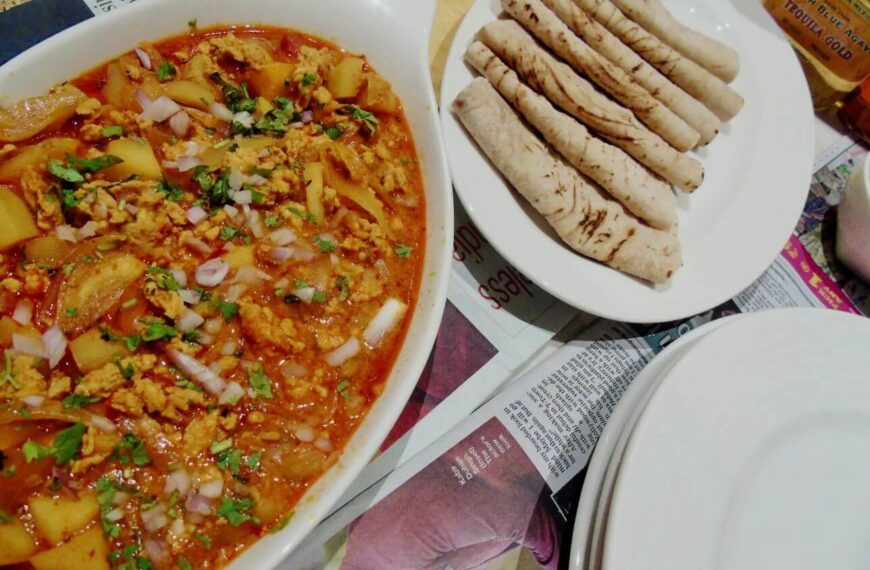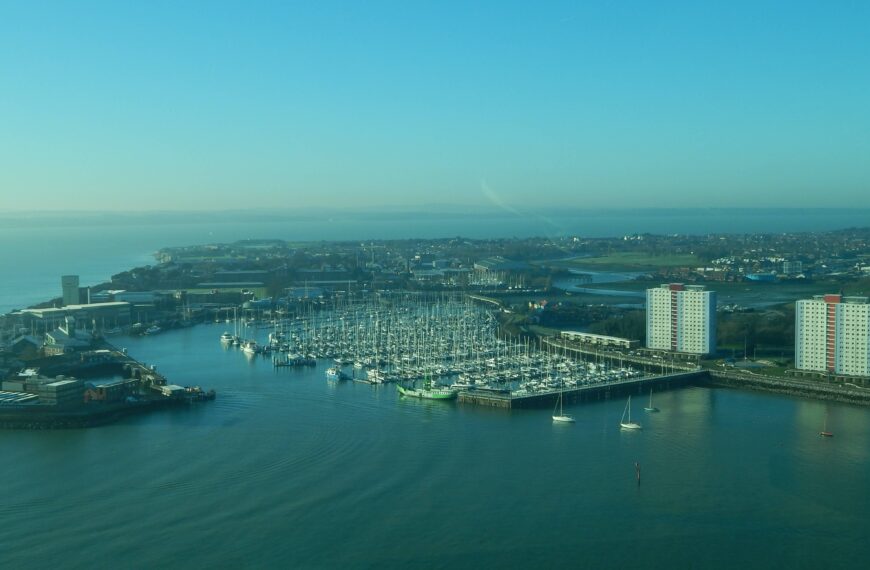The Freemantle Prison is the only World Heritage listed building in Western Australia. Built in the 1850’s by the prisoners themselves, it was used as a barracks for convicts shipped from England and Ireland. It was the state’s prime maximum-security prison till it was decommissioned. Today, it is one of the largest surviving prisons in the world, making it a historically important tourist site. For 136 years, up until 1991, thousands of inmates experienced its horrors. Shernaz tells us about the prison tour, macabre and grotesque, in the weekly column, exclusively in Different Truths.
Dayadhvam: I have heard the key
Turn in the door once and turn once only
We think of the key, each in his prison
Thinking of the key, each confirms a prison
~ The Wasteland, T.S. Eliot
Fancy a spooky night-time jail experience? Then, the Torchlight Tours conducted on Wednesday and Friday nights in Fremantle Prison are right up your alley. They are not for the faint-hearted. One Danni T. reviews his experience thus: It is still extremely informative and you still get to see the prison but you will also be met with actors portraying infamous prisoners, supernatural tales, and more than one heart-stopping experience.
If an underground escapade is more your kind, then the Tunnels Tour could give you the thrills. It demands going down a 20 meter, steep ladder and tackling it back up. Underground, one has to trek the dry areas on foot and then access the dark, submerged passageways by paddle-boating. This labyrinth of winding, water-logged tunnels was constructed to provide fresh water from an aquifer to the prison and later to the town. It can be as daunting as the spooky torchlight tour. Claustrophobic and/or acrophobic visitors are advised to skip this tour. All tours pass costs less than doing each individually.
The prison also offers a Prison Day Tour and an Art Tour besides the two mentioned above. The prison’s official website invites us to “Join our experienced guides on this exclusive tour as they reveal the experiences of the prisoners expressed through art. View convict-drawn frescoes and religious works, European landscapes, Aboriginal landscapes in the renowned Carollup style, dot paintings, graffiti, and tattoo art.” It also cautions: “Some artwork on this tour contains graphic images and text, which could be offensive to some people. This tour is not recommended for people who are offended easily.” We did the day one, also called “Doing Time or Great Escapes” and it was eerie, somber and dismal enough to dissuade us from the other two which we were informed were for physically and emotionally tough souls.
 This is the only World Heritage listed building in Western Australia. Built in the 1850’s by the prisoners themselves, it was used as a barracks for convicts shipped from England and Ireland. It was the state’s prime maximum-security prison till it was decommissioned. Today, it is one of the largest surviving prisons in the world, making it a historically important tourist site. One can even book its main block, chapels, SHU Meeting Room, Crown Theatre, Parade Grounds, Workshops etc., for weddings, parties, and other events. Yes, people really do consider getting married in the prison chapel! There is also a gift shop with grim reminders of what prison life can mean. No, we didn’t buy any souvenirs here.
This is the only World Heritage listed building in Western Australia. Built in the 1850’s by the prisoners themselves, it was used as a barracks for convicts shipped from England and Ireland. It was the state’s prime maximum-security prison till it was decommissioned. Today, it is one of the largest surviving prisons in the world, making it a historically important tourist site. One can even book its main block, chapels, SHU Meeting Room, Crown Theatre, Parade Grounds, Workshops etc., for weddings, parties, and other events. Yes, people really do consider getting married in the prison chapel! There is also a gift shop with grim reminders of what prison life can mean. No, we didn’t buy any souvenirs here.
Initially called the Convict Establishment it was re-christened Colonial Convict Establishment, in 1866, and finally came to be known by its present name. For 136 years, up until 1991, thousands of inmates experienced its horrors. Built from limestone quarried on site, the convict era complex comprises the four storey high main cell block(divided into four divisions with large double doors separating them), chapel, and wards, yards and refractory cells; perimeter walls, gatehouse complex and prison officer residences; service buildings, hospital and south-eastern workshops. The gallows came into existence, in 1888, where the last execution took place, in 1964.Later additions were the western workshops (1900), the eastern range (1889–1909) and new division (1907); the service building was later converted to the female division. Electric lighting was installed in the 1920s but the prisoners still had to use buckets for toilets, which they emptied when taken out of their cells.
The sights of the poky cubicles, the gallows, the daunting solitary confinement cells – the unit where the convicts spent the last days of their life and the whipping post were blood-curdling. The guide’s wry humour did not do much to elevate my spirits and yet I will say it is not just an eye-opener or a lesson in Australia’s history of crime and punishment; it is very sobering and can be a terrifying deterrent against wrongdoing that warrants incarceration. Imagine being cooped up in a small 4’x7’ cell with little sunlight, no sky to soothe, food often not fit enough for animals, no electricity; to contend with the stench of one’s own urine and faeces! To that add cockroach, scorpions, snakes and other creepy-crawlies sharing your constricted space during the monsoons! Spine-chilling!
convicts spent the last days of their life and the whipping post were blood-curdling. The guide’s wry humour did not do much to elevate my spirits and yet I will say it is not just an eye-opener or a lesson in Australia’s history of crime and punishment; it is very sobering and can be a terrifying deterrent against wrongdoing that warrants incarceration. Imagine being cooped up in a small 4’x7’ cell with little sunlight, no sky to soothe, food often not fit enough for animals, no electricity; to contend with the stench of one’s own urine and faeces! To that add cockroach, scorpions, snakes and other creepy-crawlies sharing your constricted space during the monsoons! Spine-chilling!
As we were guided through the complex it seemed to me that the narratives of those who had spent a gruesome time locked in there would tumble out of the cells and walls; that at any moment deafening screams, murderous shouts, deadly brawls, brutal commands, smutty language and heart-wrenching forlorn sobs ricocheting through its emptiness – the gamut of human emotions and atrocities would pummel my ears. The ghosts of a sinister past seemed to loom around ominously, their sibilant whispers pleading for redemption; seeking to reverse unmerited sentences and retrieve their dignity. It was uncanny, unnervingly palpable!
Prisons are hardly a place of correction or reformation. They are more like dungeons of slavery and punitive action; hellholes of perdition where one’s identity is a number, where the only selfhood is being dehumanised, where self-esteem is shorn off together with the skin and flesh shredded by flogging. In Fremantle jail, if an inmate had been awarded 70 lashes and at some point, the attendant doctor felt that he would not be able to tolerate anymore, the whipping would be stopped. The man would be sent to a hospital and once the lacerations healed he would be brought back to finish his punishment. On no account could he forfeit the remaining whiplashes. I shuddered to hear this. Such treatment only hardens the criminal, the one inflicting it and those witnessing it.
 And the final showpiece – the gallows – was no relic to marvel at. This vicious place that had seemingly meted out the ultimate justice to many a convict, made me ponder again over the question – Does anyone have the right to condemn another human being to death? Is capital punishment justified under any circumstance? Behind the Anglican chapel altar, there is a painted representation of the Ten Commandments. The words to the sixth commandment use the unusual translation of “thou shalt do no murder” rather than “thou shalt not kill” the more common interpretation in the Church of England. Given that the gallows were still in regular use, it was felt that “thou shalt not kill” would have been hypocritical. (Wiki). Can we rationalise one form of killing, while condemning another?
And the final showpiece – the gallows – was no relic to marvel at. This vicious place that had seemingly meted out the ultimate justice to many a convict, made me ponder again over the question – Does anyone have the right to condemn another human being to death? Is capital punishment justified under any circumstance? Behind the Anglican chapel altar, there is a painted representation of the Ten Commandments. The words to the sixth commandment use the unusual translation of “thou shalt do no murder” rather than “thou shalt not kill” the more common interpretation in the Church of England. Given that the gallows were still in regular use, it was felt that “thou shalt not kill” would have been hypocritical. (Wiki). Can we rationalise one form of killing, while condemning another?
Despite the perimeter walls, iron gates, gun towers and other precautions were taken, dozens of prisoners had made daring escapes from here. For an additional $ 8/- charge, day tour visitors are regaled with tales of these escapes and also of failed attempts. A few have been written about[i].
Being inside a prison anywhere in the world cannot be on someone’s wish list. I would not desire such dreadfulness on anyone. Nor do I believe that others’ shame and tragedies should be the source of entertainment for us. But Western Australia’s Fremantle Prison was advertised as a cultural tourist attraction. Its imposing exterior and menacing high walls with razor wires exerted a curious pull.
Each cerebral revisit fills me with gloom. I cringe at the thought of how cruel human beings are, not just inside but even outside prison walls. Khalil Gibran says, “We are all prisoners but some of us are in cells with windows and some without.” Yes, we are all metaphorically imprisoned within the steel traps of ideologies, bigotry, social prejudice, and fear; handcuffed by numerous self-limitations. Such internal captivity leaves us ineffective and powerless. We constantly harbour the illusion of autonomy, while we stay interned in our personal mental tombs; these jails that we construct keep us locked in and the world out. We need to look through the window at the free world of the spirit, break out of this self-deceptive detention and help others detonate the fortifications of their puny minds so that we can breathe and cherish the air of true freedom.
©Shernaz Wadia
Photos by the author.
#Prison #TheFreemantlePrison #WorldHeritage #WesternAutralia #History #DifferentTruths





 By
By

 By
By
 By
By